Abstract:
The expected growing population in Barcelona and the lacking of places to live creates a scenario of opportunity where Plug-In Barcelona aims to add density without modifying the current urban morphology by the plan Cerdá and maintaining the quality access to environmental elements such as wind and solar radiation to the original buildings.
Context:
Cities are the center of human activities, according to the estimation of ONU Habitat in 2018, 55% of the world’s population lives in urban areas, and that number is expected to rise, the world cities report 2020 estimated that 68% of the human population will be concentrated in the cities, overpopulation and the rising of nomad trend are creating the dilemma of expanding urban borders with the possible consequence of unsustainability development or adding density in the existing buildings but decreasing the access to environmental elements such as solar radiation and wind, architects and urban planners has to rethink strategies to mitigate the rising problem, even the city of Barcelona which is in the vanguard of urban planning will have this dilemma in the coming decades. The metropolis has a well-structured urban plan since 1860 by the implementation of plan Cerdá, and during the past years, they constantly develop improvements to maintain the sustainable growth of the city according to its time era.
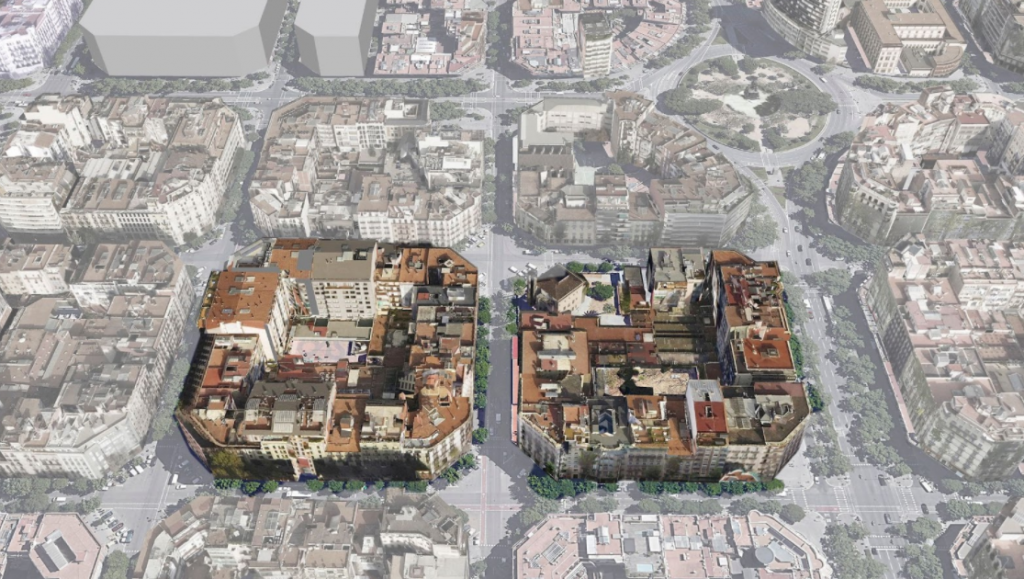
Problem Statement:
Plug-in Barcelona aims to increase the density without modifying Cerdá’s grid or expanding the city in an unsustainable way. By generating geometries that can be connected to the existing buildings we see the possibility of using the top of the buildings to add more affordable housing which adapts to the current morphology, without losing the environmental factors.
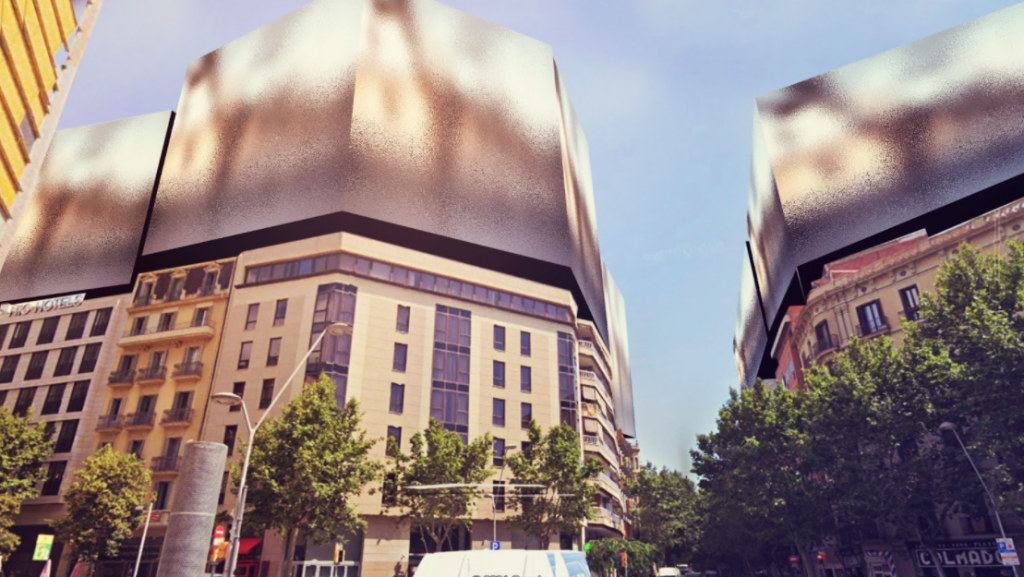
Morphology Studies:
Cerdá’s plan its main characteristics are the orthogonal grid, and the mid-dense buildings, by understanding the components of Barcelona’s blocks we can define the fitness objects to work, so the morphology analysis is mainly based to understand the measurements of the urban grid.
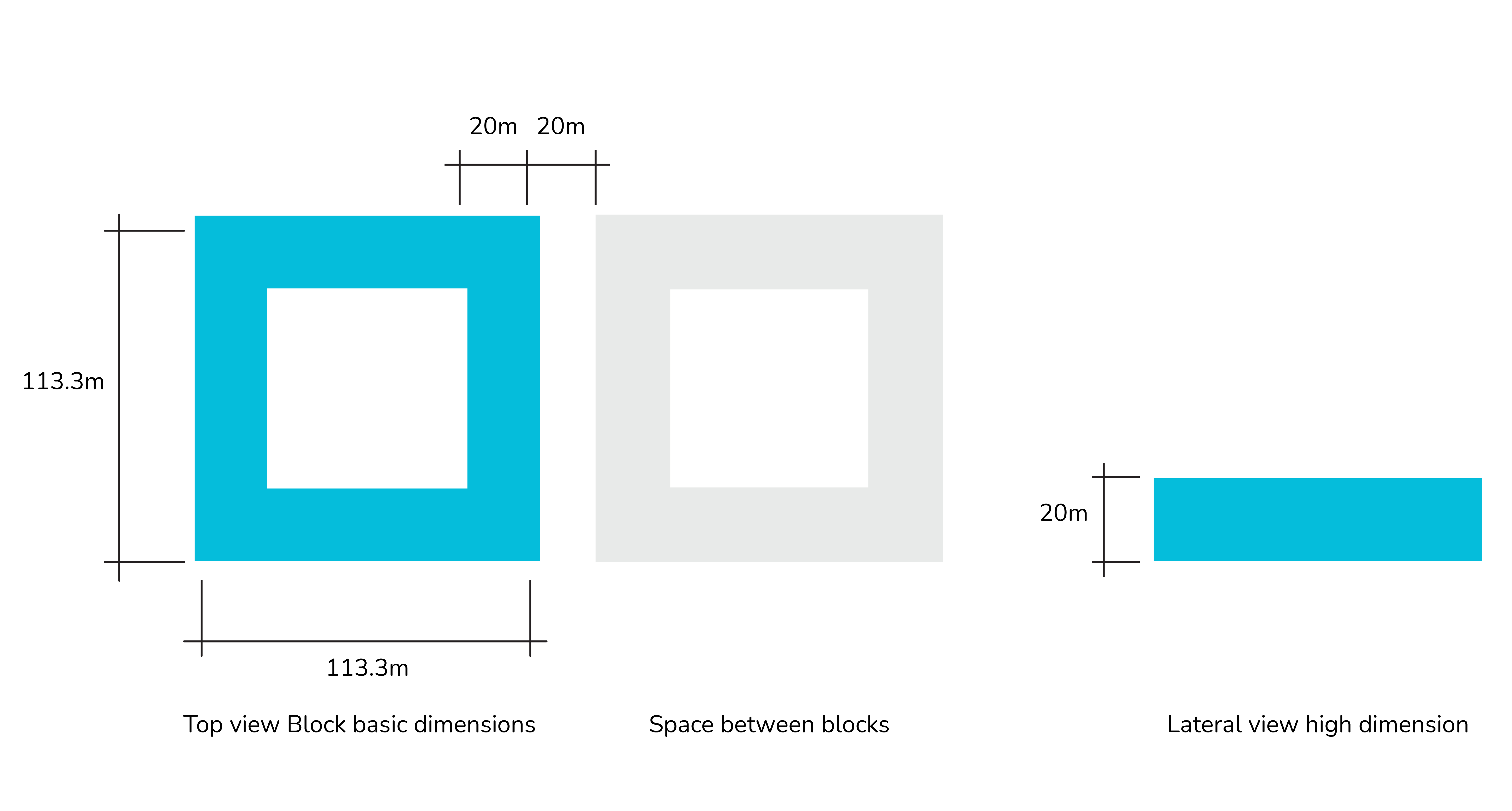
The Fitness Objectives:
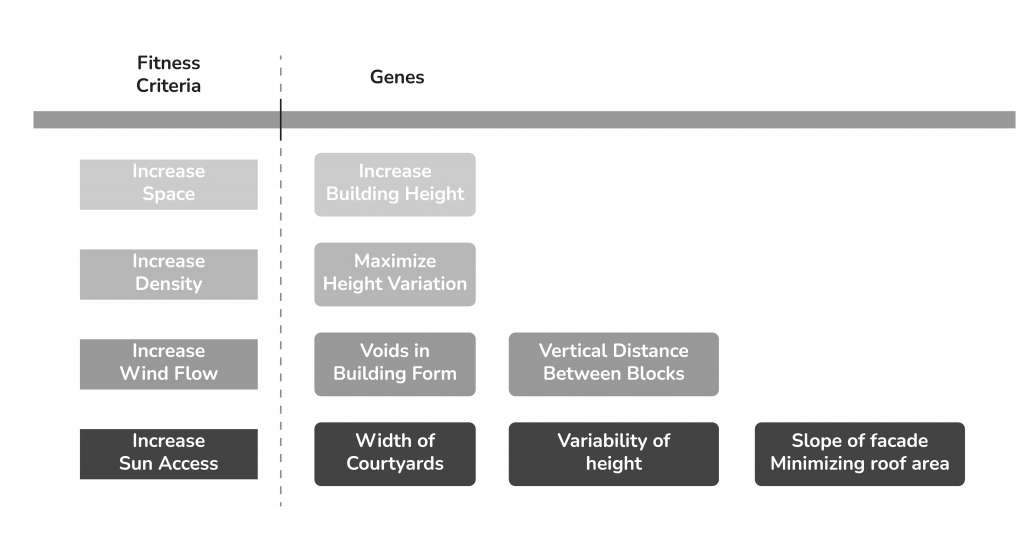
Evolutionary Matrix:

Optimization Results:




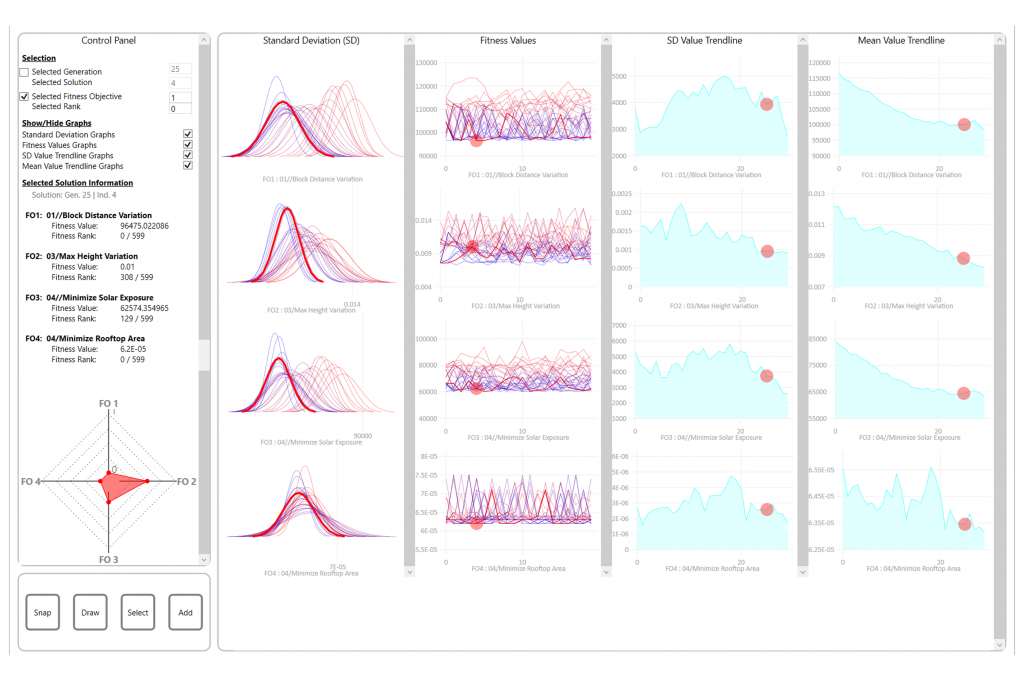
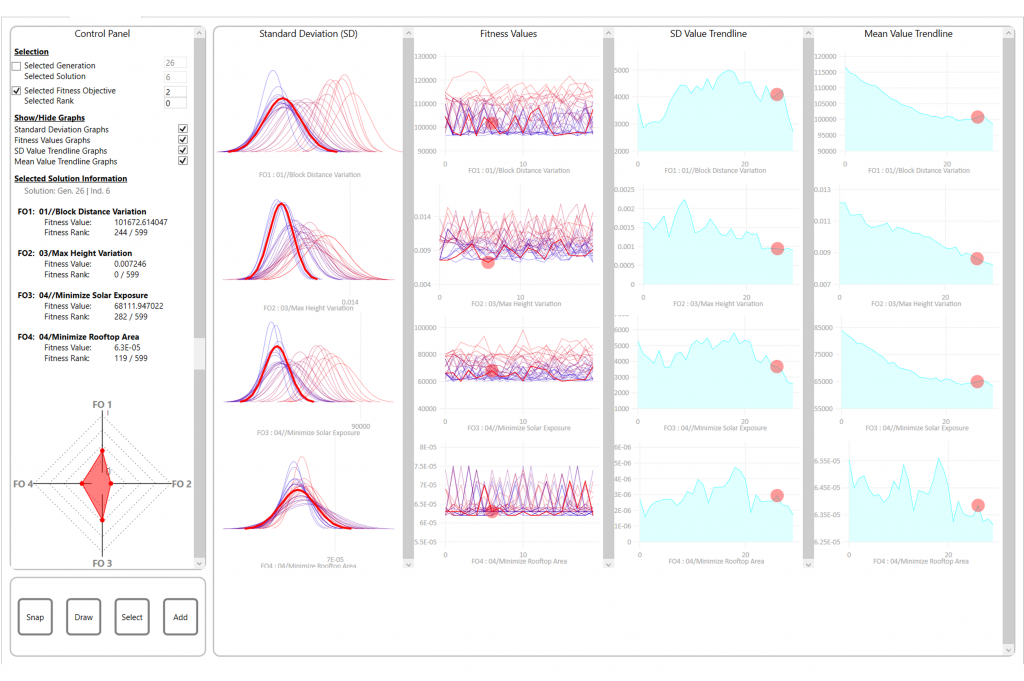
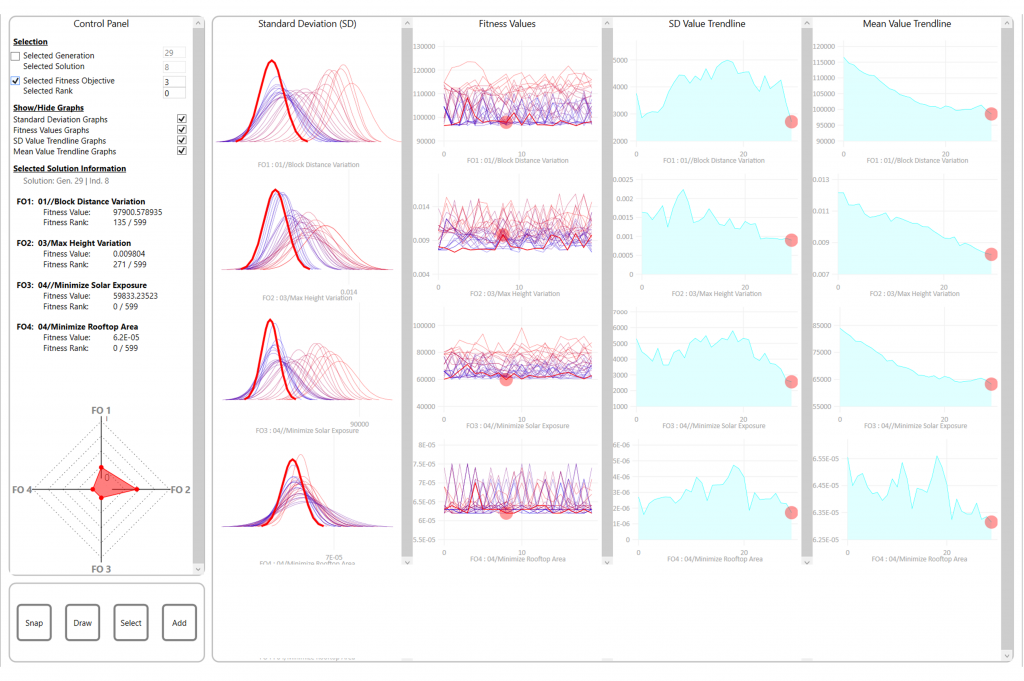
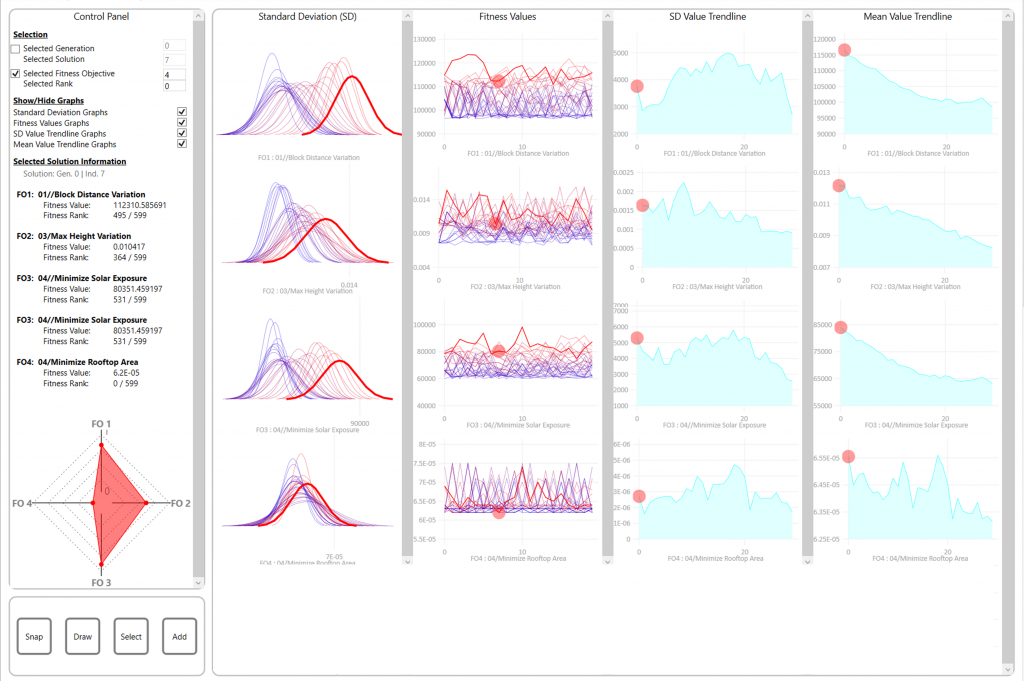
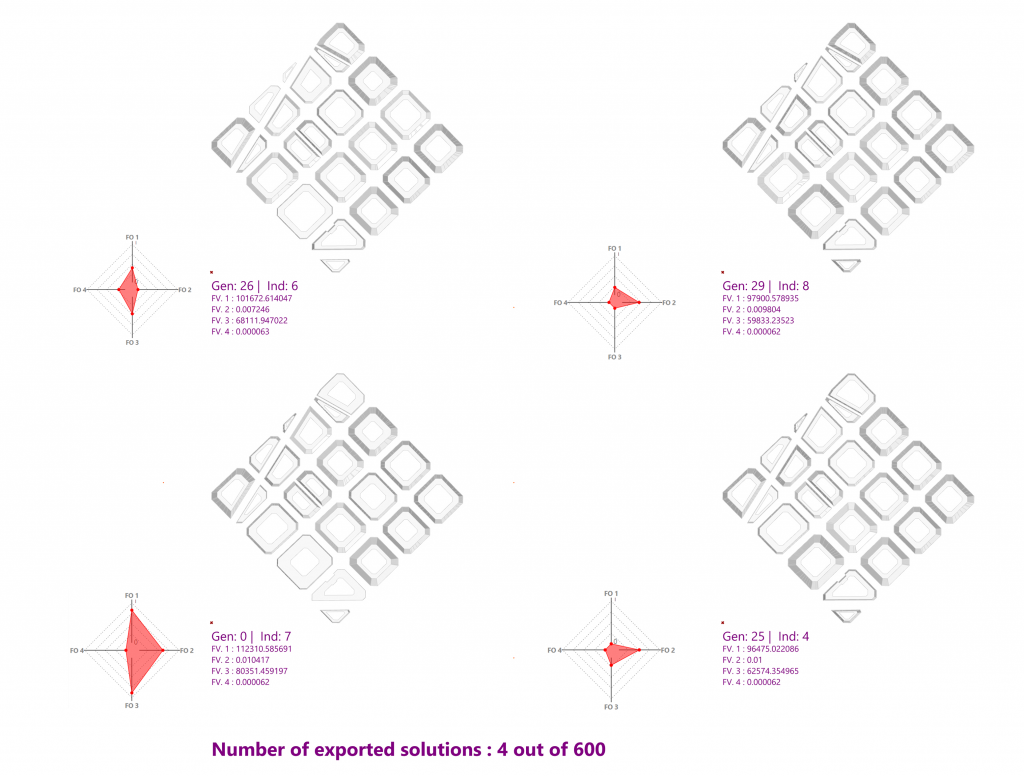
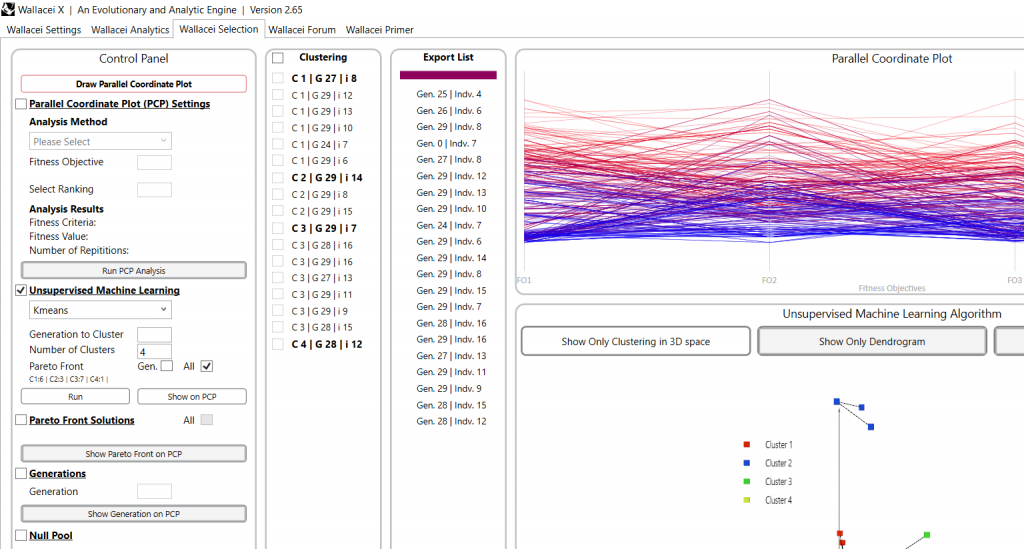
Plug in Barcelona is a project of IAAC, Institute for Advanced Architecture of Catalonia developed at Master in City & Technology in 2020/21 by student: Sasan Baharami, Juan Pablo Pintado, Mario Gonzales & Iván Reyes and faculty: Milad Showkatbakhsh